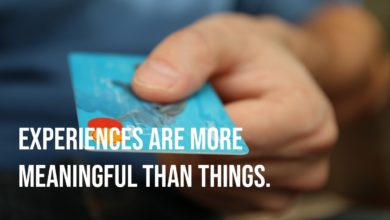[ad_1]

“The history of the present King of Great Britain,” Thomas Jefferson writes in the Declaration of Independence, “is a history of repeated injuries and usurpations, all having in direct object the establishment of an absolute Tyranny over these States. To prove this, let Facts be submitted to a candid world.”
Jefferson goes on to list 26 items as evidence of the king’s tyranny. This evidence, which takes up more than 50% of the Declaration itself, was vital to the document’s purpose: to rally the people of the thirteen colonies, to stand united as one people.
And like all great leaders of Cult Brands, the founding fathers of the United States knew that in order to stand together, you need an archenemy to stand against.
The king of Great Britain was the quintessential archenemy. By highlighting the king’s wrongdoings and opposing beliefs, Jefferson was able to draw power from the enemy while uniting the colonies.
The Hero and the Villain
Every story has two archetypal characters: a hero and a villain, a protagonist and an antagonist. They go hand-in-hand; one helps define the other.
The hero is only as big as the villain.
What would Superman be without Lex Luthor, Batman without the Joker, Spiderman without the Green Goblin?
The bigger the villain, the bigger the hero called forth to face him.
Psychologically, the villain’s role is to challenge the hero to grow or perish.
Sometimes the archenemy is a person. Often it’s a company. Two Cult Brands, Apple and Linux, both draw power from Microsoft.
When Apple was on the edge of irrelevance in the mid-1990s, Apple’s Chief Evangelist, Guy Kawasaki, was called back in to revive the Mac community. He created the slogan, “Save computer users from the Gates of Hell.”
The reference to Bill Gates and the monopolistic position of Microsoft became the battle cry of a legion of loyal Mac users.
Customers (Humans) Rally Around Ideals
The most powerful villain or archenemy, however, isn’t a person or a corporation; it’s an opposing set of ideals, values, or beliefs.
In my interview with Guy Kawasaki for my book The Power of Cult Branding, Kawasaki explained, “Every cult needs a ‘grand opposition’ that it can fight on ideological terms, not mundane parameters such as market share.”
Interestingly, virtually all Cult Brands play to the same ideal and draw power from their opposing force.
Cult Brands, like the founding fathers of the United States, uphold the banner of freedom. The opposing force is conformity, oppression, control, or perceived tyranny of one form or another.
It’s the call for liberty, for freedom, that awakens and binds the hearts of men and women.
Before listing the British king’s injustices, the Declaration of Independence drives this point home: “We hold these truths to be self-evident, that all men are created equal, that they are endowed by their Creator with certain unalienable Rights, that among these are Life, Liberty and the pursuit of Happiness.”
The Call for Freedom
The ubiquity of this call to freedom for businesses with cult-like followings led it to become one of the Seven Rules of Cult Brands: promote personal freedom.
Why is freedom such a powerful driver behind human behavior?
Because it is a deep-seated human need. Psychologist Abraham Maslow explains that as a person meets their basic human needs (physiological, safety, belonging, and esteem), the call for personal freedom is awakened.
It’s a call for inner growth, to develop your own unique identity and worldviews. This call to adventure leads a person away from the status quo—away from conventional beliefs—to an unknown destiny.
The drive for freedom forms the bridge to self-actualization.
Cult Brands do more than just serve the basic needs of their customers; they help their customers meet their higher needs, including self-actualization.
Freedom Drives Loyalty
Every revolution, cause, or movement throughout history has an opposing force from which it draws strength, power, and cohesion. Cult Brands, and other businesses that develop a loyal following, do likewise.
Cult Brands accomplish this important feat through the banner of freedom: Apple promotes the freedom of self-expression and nonconformity. Linux promotes the freedom of information. Vans promotes freedom from the conventional life.
Every revolution throughout history has a villain. Every great cause or movement has a power it draws strength from.
What is your organization fighting for? Who or what is it fighting against?
[ad_2]
Source link






